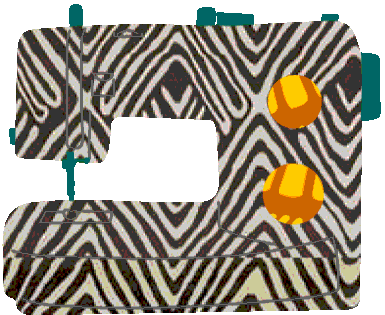AfDB Leads Initiative To Boost Potential Of Africa's Creative Sector
Over 100 designers, entrepreneurs, fashion bloggers, representatives from international organisations, and other stakeholders from the textile and fashion industry gathered Friday in Nairobi, Kenya, to discuss findings of a report on the economics of Africa’s creative sector.
The report, “Investing in the Creative Industries: Fashionomics,” is authored by the African Development Bank (AfDB), convener of the September 23, 2016 meeting.
The publication highlights the industry’s potential in accelerating economic growth and industrialization, and enhancing regional integration. “The industries use African culture and creativity as their unique selling point, both within and outside the continent, and are particularly attractive to large numbers of young people – skilled and unskilled. They create economic benefits and become a vehicle to further African regional integration and identity for a more resilient continent,” says the report in part.
In his opening remarks, Gabriel Negatu, the Bank’s Regional Director for East Africa, said despite the industry’s tremendous potential to contribute to Africa’s economy, “it was under-developed.” He reiterated AfDB’s commitment to advance the industry. “The Bank wants to bring it (the industry) forward and create an African platform for its effective operation,” he said.
With a potential of to be worth US $15.5 billion in five years according to statistics, the industry faces major challenges including: lack of capital, skills, high transport costs to ship raw materials, high operational cost, loss of intellectual property and lack of government support among others.
Addressing the meeting, AfDB’s Special Envoy on Gender, Geraldine Fraser-Moleketi, pointed out the Bank’s Fashionomics initiative, which seeks to address the industry’s challenges through focusing on the value chain. “The AfDB looks at this sector through a value chain approach to see the contribution that a ‘made in Africa’ brand can make to our African economies,” she said.
The initiative will connect and strengthen each link in the production chain; from producers and suppliers of primary materials to manufacturers, distributers and even investors. “The sector must be developed to open up its potential for revenue and job creation, especially for women and youth,” Fraser-Moleketi added.
The initiative is in line with the Bank’s Jobs for Youth in Africa strategy, which aims at creating 25 million jobs for youth on the continent as well as equipping an additional 50 million in the next decade.
Launched during the Bank’s Annual Meetings in May 2015, the Fashionomics initiative will see the Bank offer financial support to micro, small and medium-sized businesses in the fashion and textile industry in Africa. Already the Bank has invested US $10 million to assist the textile industry in Madagascar through the Investing Promotion Support Project.
The Fashionomics platform is an online resource expected to create an enabling environment for designers, buyers, suppliers, traders, investors and financiers to connect with one another in ways that will foster peer-to-peer learning, mentoring and sharing of information and knowledge within communities. It will be operational in the first quarter of 2017, and will enable users to access market opportunities between urban and rural areas, across borders and countries.
During the meeting, Fashionomics was lauded as one that would boost local designers especially in countries like Kenya where second-hand clothing was hurting the local textile industry. “Kenya has amazing talent, but the industry poses challenges to designers trying to retail. Again, confidence in local brands is shaky; designers have to fight the second-hand apparel industry. Only a few designers have established stores where their brands can be purchased,” noted Diana Opoti, a fashion expert.
Empowering African countries to produce local fabric en mass in order to boost the fashion and textile industry was said to be key. “As long as we have to keep importing fabric we will continue being at a disadvantage; when we import, we have to sell products at a higher cost. The AfDB should come in and back large scale investment where designers can easily get local fabric,” said Wandia Gichuru, a Kenyan fashion entrepreneur.
Other institutions have also come out in support of the industry. Kenya’s Equity Bank is offering financial training to designers, who upon graduating, will access a US $1 million fund established to strengthen the country’s fashion chain-from agriculture to spinners and fabric traders.
Source http://www.afdb.org/fr/news-and-events/article/afdb-leads-initiative-to-boost-potential-of-africas-creative-sector-16157/
